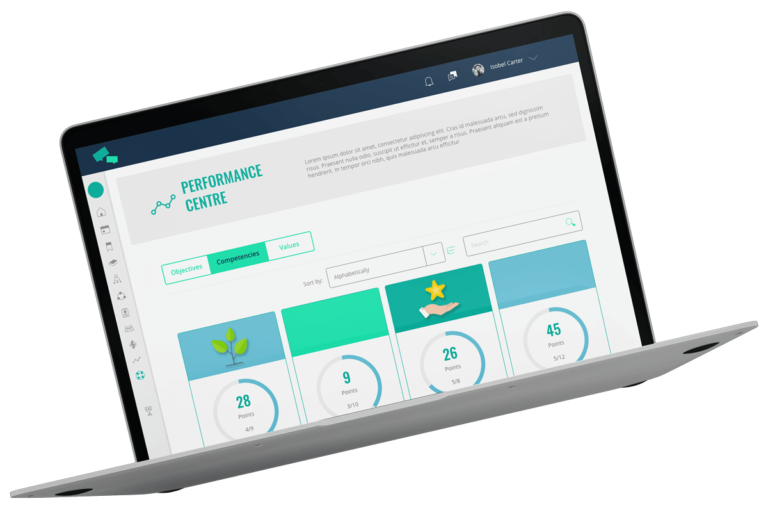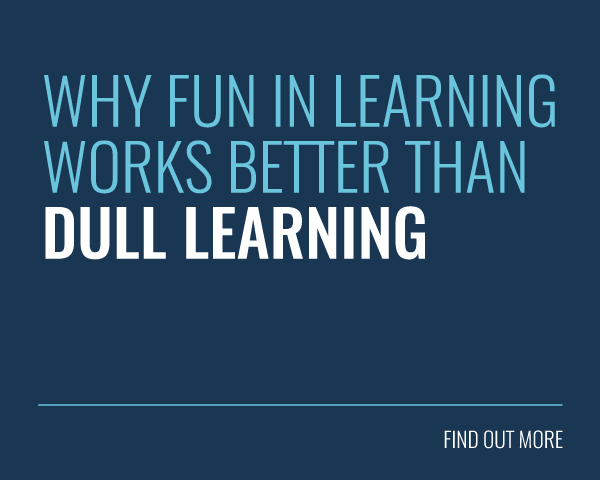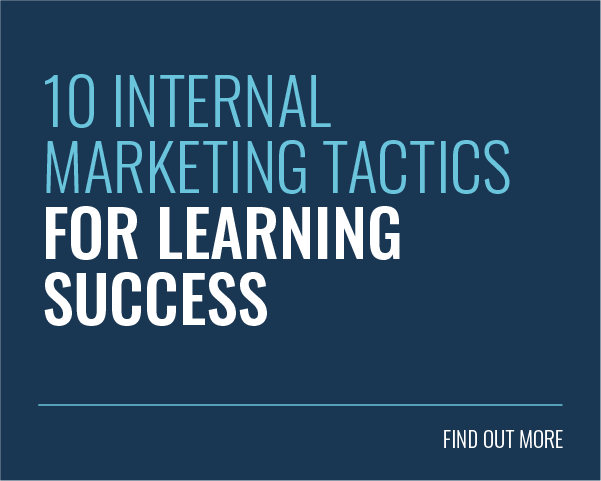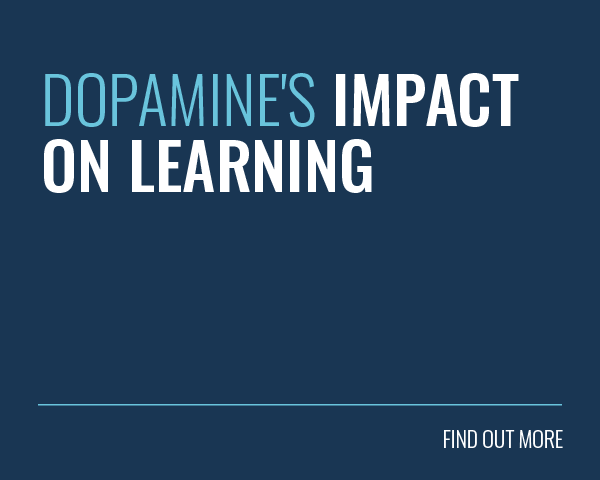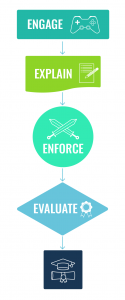
We all have different ways that we prefer to learn. And different ways that we prefer to teach! However, the foundation to achieving effective learning remains the same.
Additionally, the methods that we use to learn have evolved over time. Nowadays, learners are harder to keep engaged. They require more variety, higher quality and more flexibility from their learning. They also enjoy being able to access their content at the point of need. But their training programme should still revolve around the same core principles.
We’ve identified the four pillars that are key to effective learning. If you implement these into your training strategies, accomplishing effective learning will be a piece of cake. Let the rundown begin!
The First E – Engage

It’s impossible for learning to happen without initial engagement. After all, how can you learn about a new product or process if you have no interest in it? Unfortunately, engagement remains a difficult challenge for learning professionals. According to Gallup, only 13% of employees worldwide are engaged at work. And if employees are apathetic towards their work and learning, then the whole company suffers.
For example, companies in the US spend $82.5 billion a year on training. However, a recent study of 1,500 respondents reported that disengaged employees cost companies between $450 and $550 billion each year. As such, the cost of disengagement is clear. It lowers training value and affects your ability to achieve your organisational goals.
Any good training initiative starts with an engagement strategy. Gamification makes this easy! Our definition of gamification is: ‘the application of game mechanics to non-gaming environments to make difficult tasks more palatable.’ In other words, it makes learning much more enjoyable. Once learning becomes fun, you’ll soon see engagement levels skyrocketing!
Here are a few key game mechanics that you could deploy within your training approach:
- Experience Points (XP) – These act as a virtual currency that learners receive in exchange for completing actions on their learning platform. This includes activities like completing modules and adding posts to social feeds. XP works by appealing to learners’ extrinsic motivations and their desire to earn rewards for their efforts.
- Levels – Levels enable you to provide a structured pathway through your learning content. Once a learner has completed all the content within a level, they ‘Level Up’ and gain access to a new set of learning activities. This helps to drive further engagement by providing a sense of progression and moving up the ladder.
- Leaderboards – Leaderboards track learner performance against other users on the platform. This works by tapping into your learners’ intrinsic motivation and longing to fulfil personal goals. They’re also a form of social learning. This makes learning less isolating for your team, thus encouraging them to engage with content.
Head here for a full breakdown!
Real World Examples of Gamification in Action
The use of gamification within The Academy LMS has led to an 8.4x increase in engagement for one of our clients. Furthermore, our mobile app solution, The Knowledge Arcade, saw record engagement levels in 2020. The average user completed 810 Battle questions a month and completed four training modules a week. The app also generated £16 million in retail sales growth and improved conversion rates by 120% for one of our Fortune 500 customers.
Care for another example? Autodesk wanted to increase engagement levels throughout the trial period for their software solution. They also wanted to improve the conversion rate for free trial users turning into paying customers. With this in mind, they gamified their platform by introducing mechanics like leaderboards and badges. It was incredibly effective. It led to a 40% increase in trials and a 10% increase in users who purchased the full solution.
Gamification is also a powerful engagement tool in other areas of your business. M&M’s pretzel marketing campaign is a great example of this. To drive results, they created a game. Consumers simply had to find a pretzel hidden in an image. This supercharged brand engagement and led to over 25,000 likes and 6,000 shares on their Facebook page.
As you can see, effective learning starts with engagement. Without it, learners will definitely lose interest and won’t progress with their training programmes.
P.S. Want to see some more examples? Then follow this link!
The Second E – Explain
The second ‘E’ of effective learning can be broken down into two clear parts.
The First Part: Explain How They’ll Be Learning
Firstly, now that your learners are engaged, it’s time to explain how they’re going to be learning. Poorly relayed instructions are a recipe for disaster. You should ensure that you are adequately communicating the ‘WIIFM’ to your learners.
Did you know that poor communication causes reduced productivity? In fact, 20% of employee time is spent looking for information or someone to assist them. Thus, taking the time to properly spell out guidance is vital.
Ambiguity is a common frustration in the workplace. This can be eradicated by proper onboarding onto the programme. Clear and concise onboarding can improve productivity by over 70%. This is because employees know exactly what to do and are more motivated to progress with their learning. Furthermore, sharing digital rather than verbal instructions means they become permanent. Now learners can easily refer back to them.
Additionally, with learning technology solutions, you can facilitate seamless communication through the ‘Experts’ area. This is where subject matter experts (SMEs) reside. Learners can ask them questions at the click of a button, saving you time and money. $62.4 million to be precise. The Grossman Group survey of 400 companies found that this was the average annual amount lost due to inadequate communication.
The Second Part: Explain Your Content Approach
The next part to this ‘E’ for effective learning focuses on content. The information you want to impart to your learners should be explained as clearly as possible. If the information isn’t laid out properly, then how can you expect learners to progress with the programme?
Learning technology makes this easy. With content authoring tools like Genie, you can create courses in a few simple steps. You’re able to upload the content you want learners to study into different modules and courses. These can then be structured within Levels so there is a clear path of progression. You can even offer your learners a ‘Badge‘ or ‘Achievement’ once they’ve completed the content. That combines ‘Explain’ with ‘Engage’ and can produce great results!
To ‘Explain’ effectively, you should use a variety of different media formats. The use of scenarios, videos, diagrams or infographics rather than text-heavy content often encourages repeat visits and higher engagement. These assets also help with knowledge retention. For example, people retain 95% of content when they watch it in a video compared to 10% when reading it in text.
Let’s summarise the second ‘E’. Failing to provide clear explanations sets you up for failure. Take time to structure your content effectively and communicate the benefits to your learners. This will incentivise them into action and produce the best possible results.
The Third E – Enforce
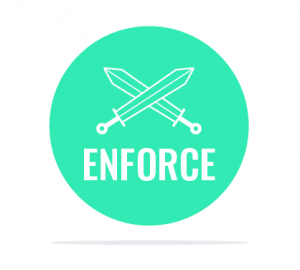
The third ‘E’ for effective learning is all about enforcing the information that you’ve shared with your learners. This helps to make it ‘sticky’ and ultimately helps to drive behaviour change. There’s no point making it this far only to have your team forget what they’ve learned.
In 1885, German psychologist Hermann Ebbinghaus tested his memory over various periods of time. His investigation revealed that we forget a whopping 90% of what we learn within a week. The results of his study are what we now refer to as The Forgetting Curve. Thus, it’s essential that you find ways to combat it.
An easy way to do this is with knowledge Battles. Battles are quick player-v-player quizzes that allow learners to prove their mastery over a subject. These are a fun and engaging way for learners to reinforce their knowledge.
They also tap into a learner’s competitive nature. In a study of over 1000 respondents, 67% said they wanted to know how they rank against colleagues. Battles are the perfect way for them to find out and reinforce their learning.
Additionally, you should make use of the different question formats within modules. A particular favourite of ours is the Discovery Method. Our Genie content authoring tool empowers you to insert Discovery Method questions into your training materials. These questions actively encourage your team to use their own previous experiences to facilitate learning and behaviour change.
The Discovery Method is a perfect match for followers of Constructivism Learning Theory. After all, this theory holds that learners digest content better when they integrate it with their own experiences and skills.
How Else Can Learning Be Enforced?
You should also use Assessments on your LMS to your advantage. These allow you to formally assess a learner’s understanding of the content you’ve shared. You can edit and set your own requirements and award XP or badges upon completion.
The use of Battles, experience-focused questions and assessments all work towards effective learning through knowledge reinforcement. This helps to transfer information into the long-term memory and thus, increases memory retention.
In fact, The Research Institute of America found that eLearning boosts retention rates by up to 60%. Increased knowledge retention then leads to improved work performance and better attitudes towards learning. Furthermore, studies show that game-based reinforcement is significantly more effective than traditional methods. So don’t be afraid to use learning games and incorporate game mechanics throughout your training experiences.
Finally, social learning features are a great way to reinforce learning too. They’re a great way of contextualising information from formal training units. They also help to keep the learning experience going, even once content has been consumed! For example, learners can head over to social feeds and discuss what they’ve discovered in their formal training experiences. In addition, these features cultivate a knowledge-sharing culture, which can improve productivity by 40%.
A word of warning: don’t cram knowledge reinforcement too close together. Numerous studies show that spaced repetition helps people to remember content much better.
The Fourth E – Evaluate
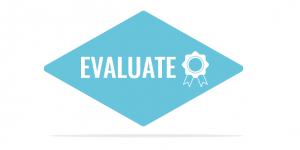
Now we’ve come to the end of the road. Well, nearly. The last step to effective learning is evaluating how well the training programme has performed.
Return on investment (ROI) is a big concern for organisations and rightfully so. Training Magazine’s 2020 Training Industry Report found that the average company spent $1,111 per employee on training in 2020. Unfortunately, one poorly trained team will cost you $18,300. Training can be costly. And that’s doubly true if it doesn’t produce meaningful business impact.
But don’t fret, we’ve got you covered! With the use of learning technology, you can effortlessly monitor performance. LMSs like The Academy LMS offer extensive tracking and reporting features. With these, you can see exactly how your investment is being spent and adjust it accordingly if you aren’t satisfied with the results.
For example, you can see the content completion rates of each learner. This allows you to determine which content best resonated with your audience and which failed to gain traction. You’re then able to send out a few push notifications to subtly prompt them into action. This type of communication is perfect for modern learners, who check their phones 58 times a day on average!
You can also use reporting features to tailor learning and feedback to each learner. If a learner is taking 30 minutes to complete a module that should take ten, then you know something’s going wrong. You can then provide learners with personalised, real-time guidance. Or, you could even reshape their training path to include refresher content. This is incredibly important. Companies who pay attention and implement regular feedback have 14.9% lower turnover rates than those who don’t.
Adapting Future Training
To achieve effective learning, you also need to alter future training where necessary. Tracking and reporting features are key to this process. You can filter reports by region, division, department and more for a comprehensive view of performance. These reports can then be tracked alongside business metrics.
For example, you may notice that certain territories’ business performance is significantly higher than others. Perhaps you recently rolled out a module focused on a particular product or service. Now the sales of that product or service have started to rapidly increase. Looking at progress reports allows you to create a tangible link between the two.
Now you’re able to duplicate the content or strategy being delivered to those territories and recreate it for others! For instance, perhaps certain game mechanics are being engaged with more than others. If this is the case, you may want to use them more within other territories to try and produce better results.
Consider this example. One of our Fortune 500 clients saw a 20% increase in sales in territories using our mobile app solution, The Knowledge Arcade. Once they implemented the app and its content in other territories, they saw the same increase in sales. Pretty amazing, right!
These features also highlight where learners are struggling with their training material. For example, a large pharmaceutical company was able to identify that their sales team was grappling with a specific topic. Evaluating the data from their learning platform helped them to quickly discover the disconnect between their sales and marketing teams and then fix the problem!
Through this evaluation process, you’re better able to see how your learners are progressing. You’re also able to monitor if the programme is producing real business impact. Companies have been able to link a $30 productivity boost and 18% increase in employee engagement to effective learning programmes.
Final Word

And we’re out of Es! Making use of these four Es when implementing a learning programme can completely transform the outcome of your initiative. They all lead you onto the path to effective learning and turbocharge learner engagement.
It’s also important to keep referring back to the E’s once learners have begun using your learning platform. Continuous learning is a part of an effective training approach. But unfortunately, it’s possible for learners to become stagnant in their training.
As a result, some things may need to be readjusted. You should use data from your learning management system to determine what needs to be changed and create a re-engagement plan. You should also check that information is being reinforced properly.
We kept the four Es in mind when designing all of our learning solutions. If you’d like to learn more about the amazing results they’ve helped to generate for companies like L’Oréal, HP, BT, EE, Flight Centre and many others, then get in touch with us today!
Drive Unlimited Learner Engagement
Create Serious Business Impact
